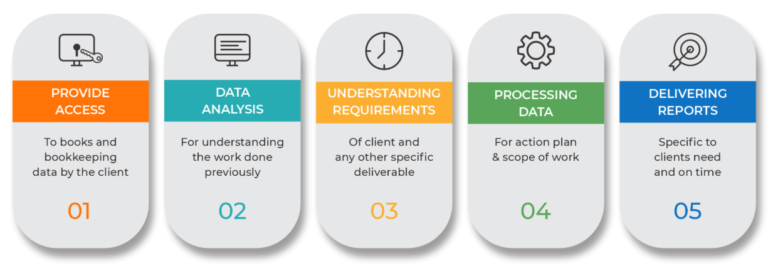Mobile Traffic Dominates the Web
Over 60% of web traffic in 2025 comes from mobile devices. Whether your audience is browsing product catalogs, reading reports, or accessing educational materials, most will do so on a phone or tablet. Ignoring mobile users means missing a large segment of potential customers or readers.
A Seamless User Experience
Traditional PDFs frustrate mobile readers. Users often struggle with zooming and scrolling, which interrupts the reading flow. Mobile-friendly flipbooks solve this problem by:
- Automatically resizing to fit the screen.
- Providing smooth swipe navigation that mimics the experience of a physical book.
- Allowing easy access to interactive elements like links or buttons.
A seamless experience encourages readers to spend more time on your content, increasing engagement and building trust.
Higher Engagement and Conversions
Mobile-friendly flipbooks can turn casual browsers into buyers or subscribers. For example:
- Product catalogs with tappable “Buy Now” buttons make shopping effortless.
- Educational flipbooks with interactive quizzes or videos increase knowledge retention.
- Marketing brochures with links to landing pages drive lead generation.
When readers can interact with content without friction, engagement and conversions naturally rise.
SEO Benefits You Can’t Ignore
Google’s mobile-first indexing means that mobile-friendly content ranks higher in search results. Flipbooks that load quickly, display correctly on all devices, and keep users engaged signal quality to search engines. Additionally, mobile-friendly content is more likely to be shared on social media, increasing referral traffic and brand visibility.
Flipbook vs PDF on Mobile: Which Wins?
PDFs on Mobile: Common Challenges
- Hard to zoom in and out.
- Slow to load on some devices.
- Static layout, no interactivity.
Flipbooks on Mobile: Advantages
- Adjust automatically to any screen size.
- Swipe navigation and touch-friendly buttons.
- Embed videos, links, and other interactive media.
- Shareable across social and messaging apps.
In short, flipbooks provide a richer, more enjoyable experience for mobile users, making them more likely to read your content and take action.
Key Features of a Mobile-Friendly Flipbook
Creating an effective mobile-friendly flipbook requires attention to specific features:
- Responsive Design: Automatically adapts to screens of all sizes.
- Lightweight & Fast: Ensures pages load quickly, avoiding drop-offs.
- Clickable Elements: Buttons, CTAs, and links must work seamlessly on touch screens.
- Interactive Media: Videos, animations, and images engage users more deeply.
- Shareability: Allows readers to quickly share your flipbook via email, WhatsApp, or social media.
These features collectively improve usability, engagement, and conversions, making your content more effective than static PDFs.
How to Create a Mobile-Friendly Flipbook
Follow these practical steps to create a flipbook optimized for mobile users:
- Start with a Clean, Optimized PDF
Use clear fonts, high-contrast text, and compressed images. Avoid cluttered layouts that don’t translate well to small screens. - Use an Online Flipbook Maker
Platforms like [https://pdfflipbook.com/] make it easy to convert PDFs into mobile-ready flipbooks. You can add animations, interactive elements, and branding without technical expertise. - Add Interactivity
Embed clickable links, product buttons, videos, and other media. Interactive elements keep readers engaged and encourage conversions. - Test Across Devices
Always preview your flipbook on phones, tablets, and desktops to ensure smooth performance. Make adjustments for readability and navigation. - Publish and Share
Embed your flipbook on your website, send it via email, or share it on social platforms. Ensure it loads quickly and displays correctly on all devices.
For more advanced guidance, you can also check out How to Embed a Flipbook on Your Website in 5 Steps.
Real-Life Example: eCommerce Store Success
A small online fashion store recently converted its seasonal PDF catalog into a mobile-friendly flipbook. By optimizing for mobile:
- Customers spent 40% more time browsing the catalog on their phones.
- Click-throughs on “Shop Now” buttons increased, driving a 25% boost in sales.
- The interactive format allowed the brand to embed product videos, improving engagement and customer confidence.
This real-world example shows how mobile-friendly flipbooks can directly impact revenue, making them a powerful tool for businesses of all sizes. You can also learn from How Shopify Stores Are Using Flipbooks for Product Catalogs to see similar strategies in action.
Best Practices for Mobile Flipbooks in 2025
To maximize the impact of your mobile flipbooks:
- Readable Text: Ensure fonts are large enough to read without zooming.
- Clear CTAs: Use buttons that are easy to tap with a finger.
- Optimized Images: Compress images to reduce loading time without sacrificing quality.
- Clean Design: Avoid clutter to keep the reader focused.
- Fresh Content: Update flipbooks regularly to keep your audience engaged and coming back.
By following these best practices, your flipbooks will not only look good but also perform well in terms of engagement and conversions.
Industries That Benefit Most from Mobile-Friendly Flipbooks
Mobile-friendly flipbooks are versatile and useful across several sectors:
- eCommerce: Product catalogs and seasonal brochures.
- Education: Course materials, guides, and interactive eBooks.
- Real Estate: Property brochures with photos, videos, and contact buttons.
- Marketing Agencies: Branded presentations and portfolios.
- Small Businesses: Menus, flyers, proposals, and promotional materials.
The adaptability of flipbooks makes them valuable for anyone looking to communicate content effectively on mobile devices.
Conclusion: Don’t Miss the Mobile Wave
Mobile-friendly flipbooks are no longer optional they are a necessity in 2025.They provide:
- A superior user experience.
- Higher engagement and time spent on content.
- Better conversions and sales.
- SEO benefits from mobile-first indexing.
If you haven’t upgraded your PDFs yet, now is the perfect time. Start creating your mobile-friendly flipbook today with pdfflipbook.com and ensure your content reaches, engages, and converts mobile audiences.
For further guidance, explore How Shopify Stores Are Using Flipbooks for Product Catalogs or the Tumblr guide on embedding flipbooks to see practical examples.




